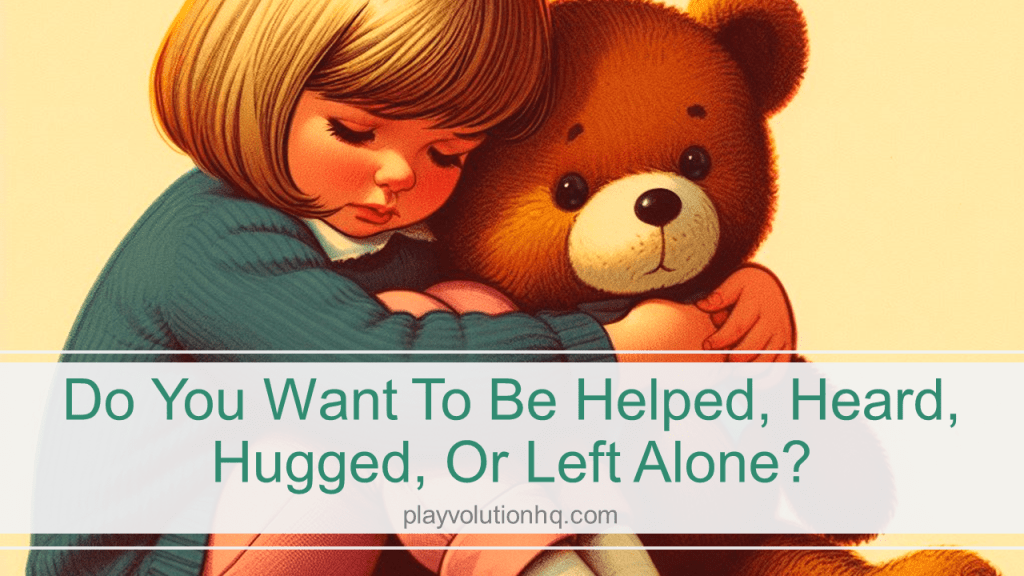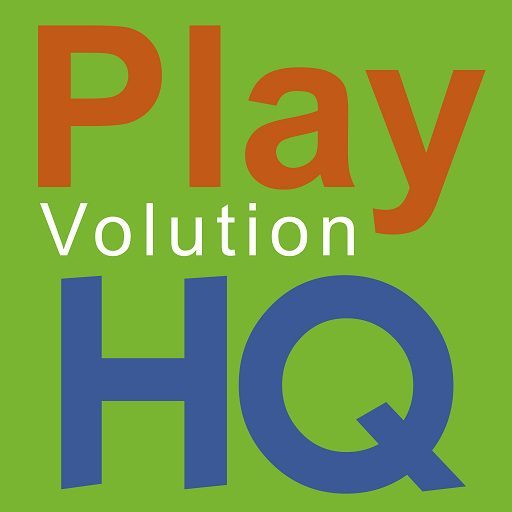
Table of Contents
The quarry “Do You Want to be Helped, Heard, Hugged, or Left Alone?” can help determine how to engage someone needing assistance. It’s an excellent place to start when you’re unsure what, if anything, you can do to assist. (My question was inspired by this one.)
As children learn to navigate the intricate world of other people, they can find themselves unsure how to proceed, confused, in need of support, emotionally shaken, or physically exhausted. The social and emotional landscape of early childhood can be bumpy.
Harrison wants the green play dough when you’re still using it, and you really don’t want to share. Then Sadie saunters over, saying you can’t come to her birthday party unless you give Harrison the play dough. You’re not even sure what a birthday party is, but you’d like to find out—but you’re still trying to shape that dough into a frog and don’t want to give it up. Then the teacher says it’s time to clean up for lunch and you’re frustrated and angry and your frog’s not done and you’re wondering what a party is and you’re hungry and maybe tired and you smash the frog and throw it at Harrison.
Do you want to be helped, heard, hugged, or left alone?
This question can be a beacon for fostering young children’s autonomy, emotional resilience, and more.

“Do You Want to be Helped, Heard, Hugged, or Left Alone?”
This question seeks to meet some fundamental human needs. Let’s examine how the four options the question offers empower children to recognize their own needs, act with agency, make choices, and resolve problems:
Helped
This option encourages children to speak up when they need assistance and seek it out. It strengthens their understanding that it’s okay to seek assistance from others.
Heard
This option reinforces the importance of expressing oneself and contributes to developing a strong sense of self.
Hugged
This option meets the need for physical contact, connection, and support. It also reinforces the idea that reaching out for support is okay.
Left Alone
This option respects a child’s need for solitude and nurtures autonomy, teaching them that seeking time alone is okay.
4 Benefits The Question Provides
Aside from helping navigate emotionally fraught situations, the question “Do You Want to be Helped, Heard, Hugged, or Left Alone?” benefits kids in the following ways:
- It Encourages Decision-Making—Offering the choices outlined in the question allows the child to practice decision-making, promoting a sense of control over their own lives.
- It Involves Them In Problem-Solving—The question involves the child in rudimentary problem-solving and solution-seeking. This instills a sense of responsibility and agency in addressing issues.
- It Celebrates Independence—The ability to choose and act on that choice acknowledges their growing agency and autonomy. This reinforces and strengthens their belief in their capabilities as individuals.
- It Provides A Useful Framework—The question also gives children a valuable framework for addressing similar situations in the future. The question becomes a tool they can use for self-reflection or when dealing with others.
What If They Can’t Answer?
This question is also helpful for very young children who cannot answer verbally. It takes some guesswork, strong relationships, and a keen eye for non-verbal cues, but the four choices the question offers can also help placate and calm distressed infants and toddlers.
Wrap-Up
Utilizing the question, “Do you want to be helped, heard, hugged, or left alone?” can help children navigate unsteady emotional landscapes while nurturing their autonomy and agency. It turns out it’s also helpful for self-reflection and in personal relationships.
Contribute content to Playvolution HQ
Brought to you by Explorations Early Learning
Browse Trainings
Post Author
Jeff Johnson is an early learning trainer, podcaster, and author who founded Explorations Early Learning, Playvolution HQ, and Play Haven.


Leave a Reply